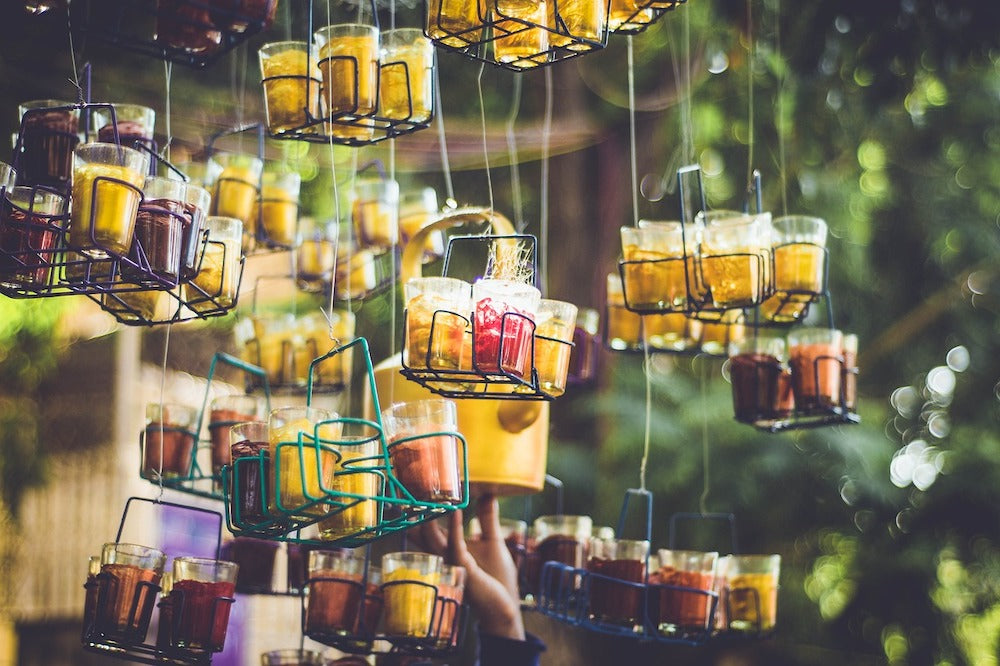Have you ever stopped to think about the history and traditions behind your favourite cup of tea? Tea is more than just a beverage; it is a cultural phenomenon that has woven itself into the fabric of societies across the globe. The concept of a tea ceremony, where the act of making and drinking tea is elevated to an art form, varies widely from one culture to another.
This blog dives into the fascinating world of tea ceremonies, exploring how different cultures have cultivated unique traditions around this beloved beverage. From preparation and serving to the very act of enjoyment, tea becomes more than just a drink - it transforms into a cultural experience. Get ready to be surprised and delighted as we unveil many of such global tea traditions.
The History of Tea
The history of tea dates back to ancient China, where, according to legend, Emperor Shen Nong discovered it in 2737 BCE. As the story goes, some tea leaves drifted into his boiling pot of water, filling the air with a delightful aroma. Intrigued, the emperor took a sip, and thus began tea's remarkable journey across time and continents.
From China, tea followed the Silk Road, captivating taste buds in Japan, Korea, and India. Eventually, its journey continued, reaching Europe and the Americas. Remarkably, each region embraced tea with open arms, weaving it into their cultures and developing unique customs and ceremonies around its preparation and consumption. Now, let’s discover 10 of such tea ceremonies along with the stories and traditions behind each one, all wrapped up in a delicious cup of tea!
10 Tea Ceremonies and Tea Traditions Around the World
- Japanese Tea Ceremony
One of the most well-known and intricate tea ceremonies is the Japanese tea ceremony, also known as "chanoyu," "sado," or "the Way of Tea." This ceremonial preparation of matcha, or powdered green tea, is deeply rooted in Zen Buddhism and emphasizes mindfulness, simplicity, and the appreciation of the present moment. Here are a few key elements of the Japanese tea ceremony:
- The Tea Room- The tea ceremony typically takes place in a specially designed tearoom. The room is often small, with tatami mats on the floor and minimalistic decor to create a serene atmosphere.
- Utensils- Essential tools for the ceremony include the tea bowl (chawan), tea whisk (chasen), tea scoop (chashaku), and the tea caddy (natsume). Each item is carefully selected and often holds significant artistic and historical value.
- The Process- The host meticulously prepares the matcha, whisking it to a frothy consistency before serving it to the guests. Every movement is deliberate, reflecting a deep sense of harmony and respect.
- Chinese Tea Ceremony
China, the birthplace of tea, boasts its own distinct tea ceremony, known as the "Gongfu tea ceremony." This practice highlights the skillful preparation of oolong tea, which is known for its rich flavors and complex aromas. Here are a few key elements of the Chinese tea ceremony:
- Tea Selection- The Gongfu tea ceremony often features oolong tea, although other varieties like green tea, black tea, and pu-erh tea are also used. The quality of the tea leaves is most important.
- Teaware- The ceremony utilizes small, intricate teapots made of Yixing clay, which enhances the flavor of the tea. Tiny teacups, a tea tray, and a tea strainer are also essential components.
- The Process- The ceremony starts with a hot water rinse to warm the teaware. Leaves are added, followed by hot water. The first brew, used for rinsing, is discarded. Later brews are poured into a shared cup for even flavor before reaching the guests.
- Appreciation- The ceremony emphasizes the sensory experience of drinking tea. Guests are encouraged to observe the color, inhale the aroma, and savor the taste of each infusion.
In India, tea is an integral part of daily life, and the preparation and enjoyment of chai (spiced tea) have become a cultural staple. Unlike the formal ceremonies of Japan and China, the Indian chai ceremony is more informal and communal.
The recipe varies slightly by region and household, but typically combines black tea leaves, milk, sugar, and a blend of aromatic spices like cardamom, ginger, cloves, and cinnamon. Preparation involves simmering the tea leaves with spices in water, then adding milk and sugar for a final boil. The hot chai is often served in clay pots having a frothy texture and enjoyed amongst family. People also gather at local tea stalls, "chaiwallahs," to share a cup and conversation, making chai a cornerstone of Indian social interaction.
- British Afternoon Tea Ceremony
The British have elevated tea drinking to an art form with their tradition of afternoon tea. Introduced in the early 19th century by Anna, the Duchess of Bedford, afternoon tea became a fashionable social event among the British aristocracy.
In a typical British Afternoon tea tradition, a variety of teas, most commonly black teas like Earl Grey and Darjeeling, are served alongside herbal and green options. The elegant setting features fine china teapots, cups, and saucers, accompanied by a strainer, milk jug, and sugar bowl. But the true stars are the delectable treats like finger sandwiches, scones filled with cream and an assortment of pastries and cakes. It even boasts its own set of etiquette, from the order of adding milk to tea to the proper way to hold the cup.
- Moroccan Tea Ceremony
In Morocco, the tea ceremony is a symbol of hospitality and friendship. Moroccan mint tea, or "atai," is a refreshing and aromatic beverage made with green tea, fresh mint leaves, and sugar. The key elements of Moroccan Tea tradition include:
- Preparation- The tea is brewed in a special teapot called a "berrad." The tea leaves are first rinsed with boiling water to remove any bitterness. Then, the mint leaves and sugar are added, and the mixture is brewed again.
- Pouring Technique- The tea is poured from a height to create a frothy layer on top, which is believed to enhance the flavor. This technique also cools the tea to an ideal drinking temperature.
- Serving- Moroccan tea is served in small, ornate glasses along with rhythmic music adding a captivating element to the tea experience.
- Russian Tea Culture
In Russia, teatime takes center stage around the samovar, a magnificent urn that keeps water steaming hot for hours. This centerpiece fuels a unique tea culture where strong tea concentrate, called "zavarka," is brewed in a smaller pot and kept warm on the samovar.
Guests then dilute the concentrate with hot water for their desired strength. Sweet and savory treats like blini (pancakes), pirozhki (stuffed pastries), and jams are common companions, while the act of tea drinking itself becomes a social event, fostering conversation and a warm sense of community.
- Turkish Tea Tradition
Turkish tea, or Çay (pronounced "chai"), is an integral part of daily life in Turkey. Small tulip-shaped glasses hold strong black tea, typically brewed in a double teapot with a stacked design. The top pot holds boiling water, while the bottom steeps loose tea leaves. This allows for quick preparation of strong, flavourful tea whenever desired.
Çay is enjoyed throughout the day, often accompanying meals and social gatherings. Fortune telling with leftover tea leaves in the cup is a popular tradition, adding a touch of mystique to the tea experience. In fact, some believe a good cup of Çay can even predict your future!

- African Rooibos Tea
Rooibos tea, a vibrant infusion from South Africa, offers a unique twist on the global tea ceremony. Unlike its caffeinated cousins, rooibos is a naturally caffeine-free herbal tea brewed from the leaves of the Aspalathus linearis plant. This crimson-hued beverage boasts a rich, earthy flavor profile with subtle hints of sweetness, making it a delightful choice for any time of day.
Rooibos is traditionally prepared simply, requiring just hot water and steeping. Milk and sugar are often added to enhance the taste, creating a comforting and customizable beverage.
- Taiwanese Tea Ceremony
Taiwan's tea culture is a fascinating blend of Chinese and Japanese influences. While the meticulous brewing techniques and focus on quality tea leaves resonate with the Chinese Gongfu Cha, the Taiwanese ceremony often takes place in a more casual setting.
Oolong tea, known for its complex flavour profile, is a popular choice. The focus is on appreciating the subtle nuances of the tea through multiple infusions, fostering a sense of relaxation and contemplation.
- South American Tea Culture
In the heart of South America, a unique tea ceremony thrives – the ritual of yerba mate. Popular in Argentina, Uruguay, and Paraguay, yerba mate isn't quite tea, but a stimulating herbal infusion brewed from the leaves of the yerba mate plant. The ceremony itself is a social experience, fostering friendship and community.
The mate, a hollowed-out gourd, serves as the vessel, while a metal straw called a "bombilla" allows for sipping the potent brew. The mate is passed around a group, each person enjoying a sip before it's refilled with hot water for the next round. This shared experience transcends the drink itself, becoming a symbol of connection and shared moments.
These are just a few examples of the diverse and captivating tea traditions that exist around the world. Each tea ceremony and everyday practice reflects the unique cultural values and social customs of a particular region. The global tea ceremony extends beyond formalized rituals. From the serene Japanese tea ceremony to the vibrant Indian chai gatherings, tea has a remarkable ability to bring people together and create meaningful cultural rituals. Whether you are a tea connoisseur or simply enjoy a cup now and then, there is always something new to discover in the tea world. So next time you take a sip, savour the experience - it's a taste of history and a celebration of tradition.
We hope this blog was insightful and enriched your understanding of the diverse and fascinating tea ceremonies around the world. Join our WhatsApp group (KingCha FraterniTEA) or facebook page to discuss more such captivating traditions and share your own tea experiences!





